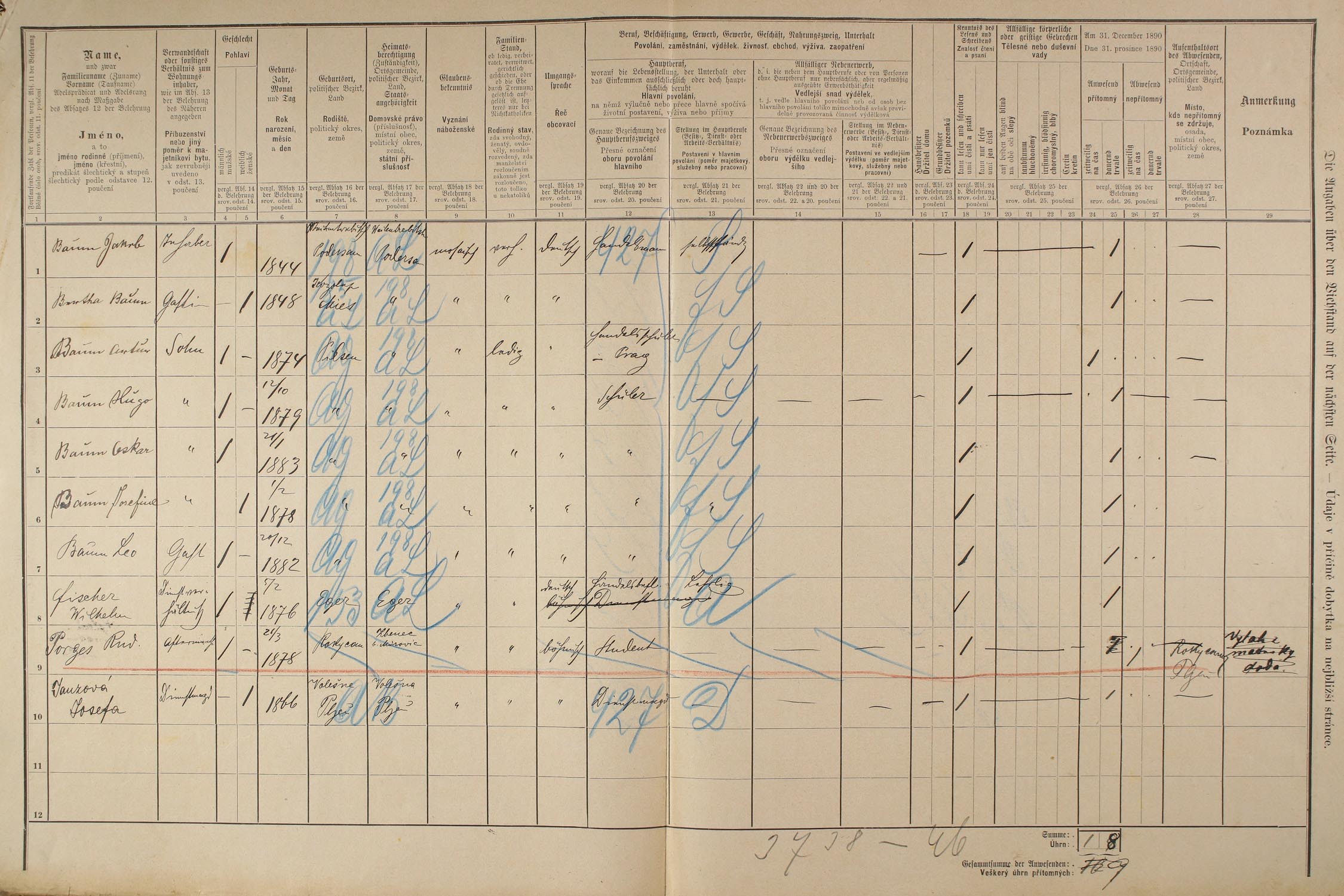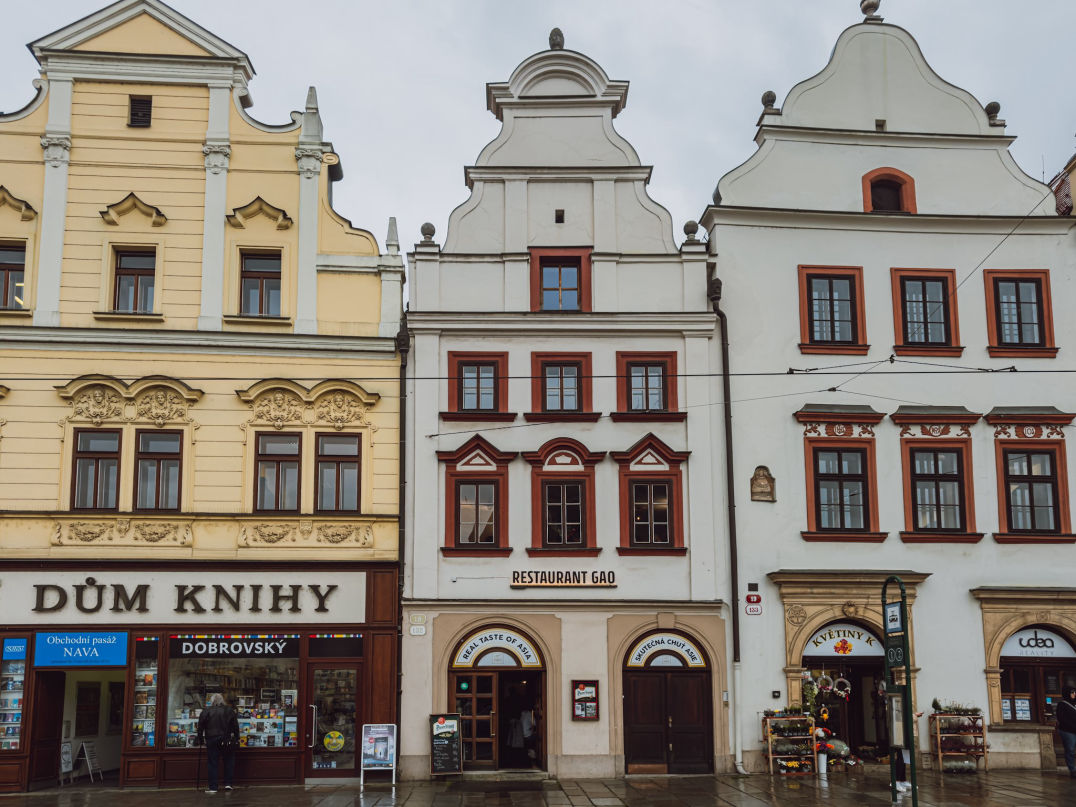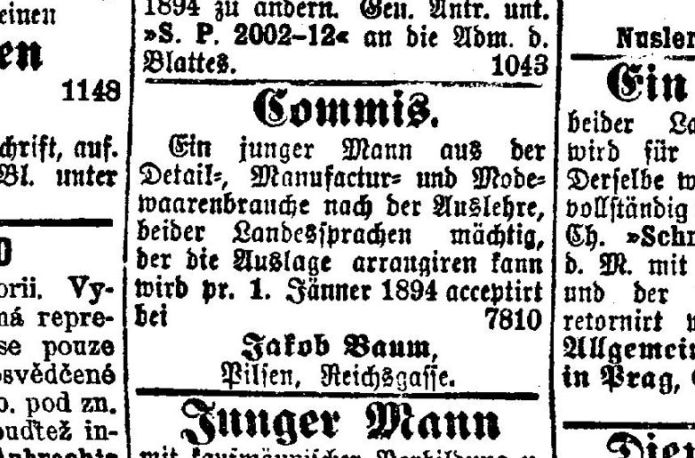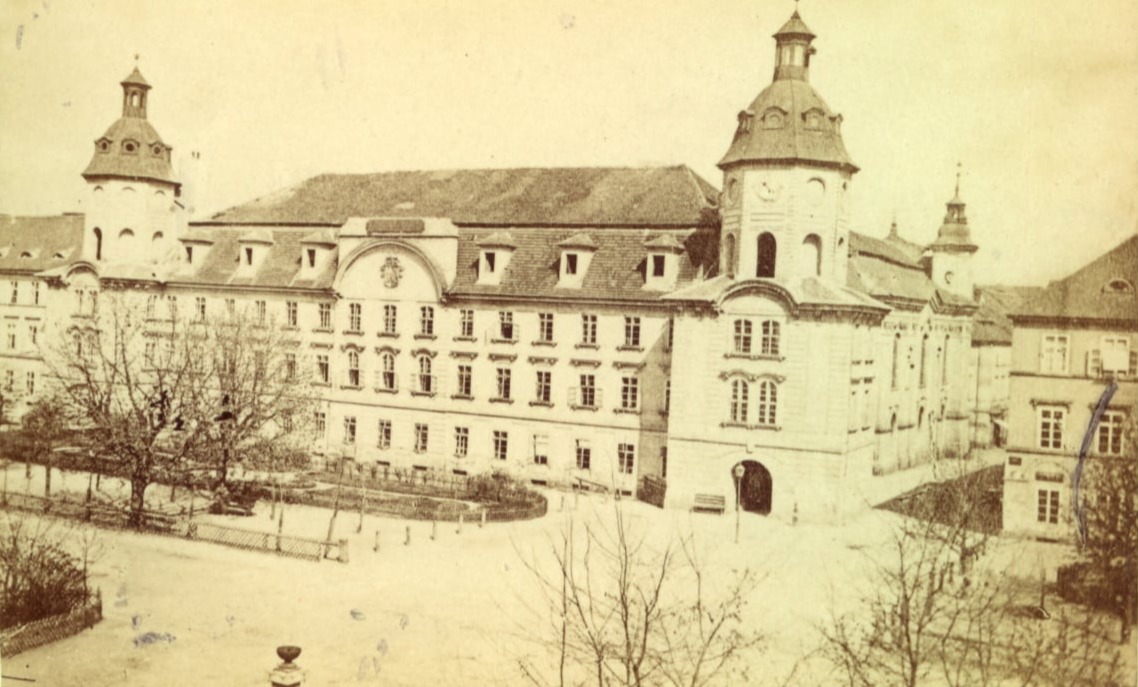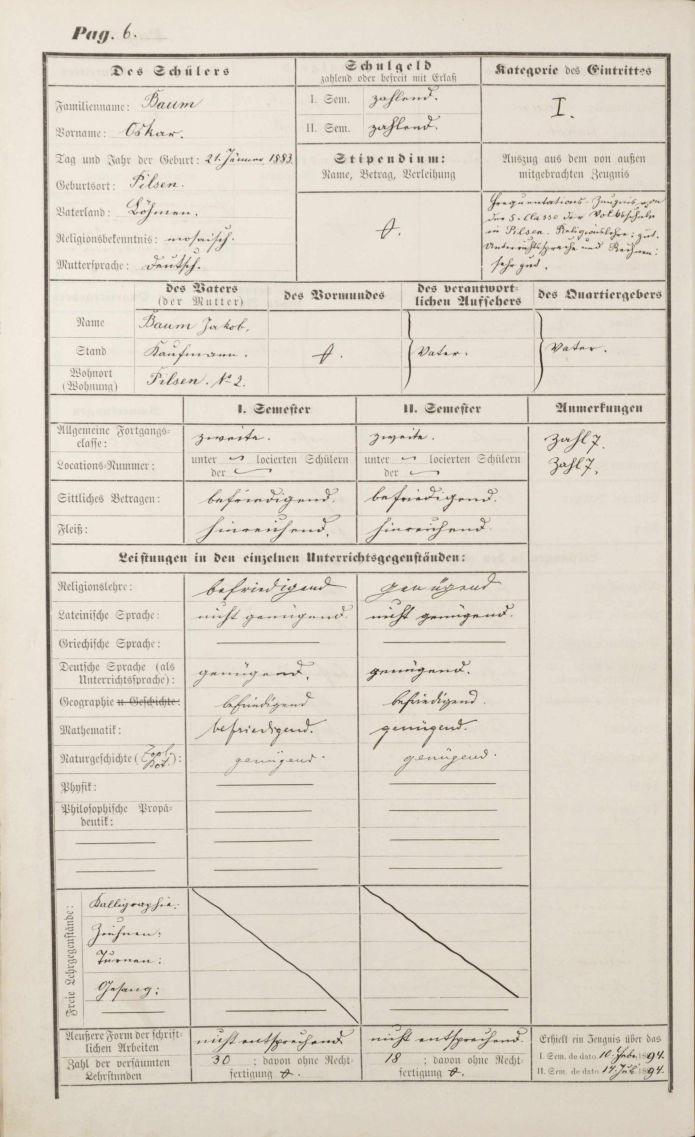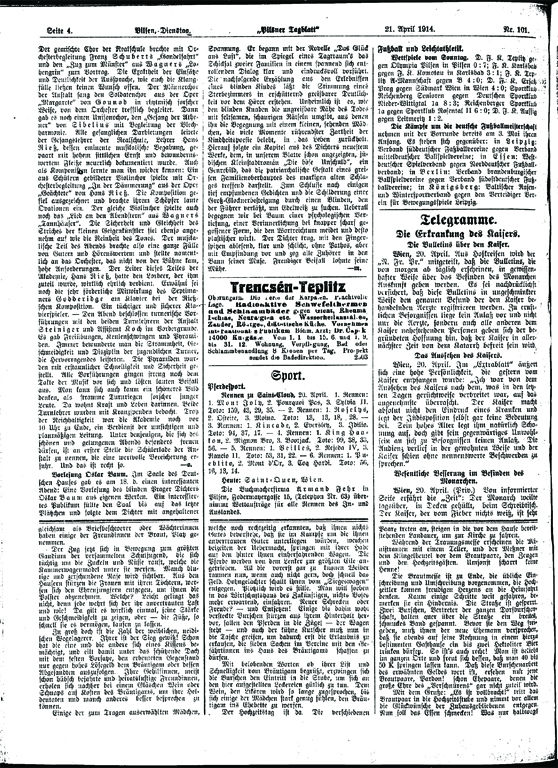
Map of Pilsen from 1881. The red dots on the map mark the house of the Baum family (A), the house on the corner of Prešovská Street and ul. B. Smetana, where the Baum family probably lived from 1897 and where Baum's father had a shop (B), and the German grammar school (C), where Baum studied.
Young Baum and Pilsen
Oskar Baum was born in Pilsen on January 21, 1883. At that time, his family was living in house no. 132 on today's Republic Square (Náměstí Republiky). Baum commented on his birth and childhood in Pilsen as follows:
“When I was born in the middle of winter, my father had a haberdashery shop in Pilsen on a beautiful, large square opposite the church. Following in the footsteps of his role model Fried Ellmann, the son of a bookseller from 'Little František Street', I would have excelled in the first grade of the grammar school if I hadn't lost my sight one beautiful day in July due to a few brawlers” (cited in Pick 1927: 171).
